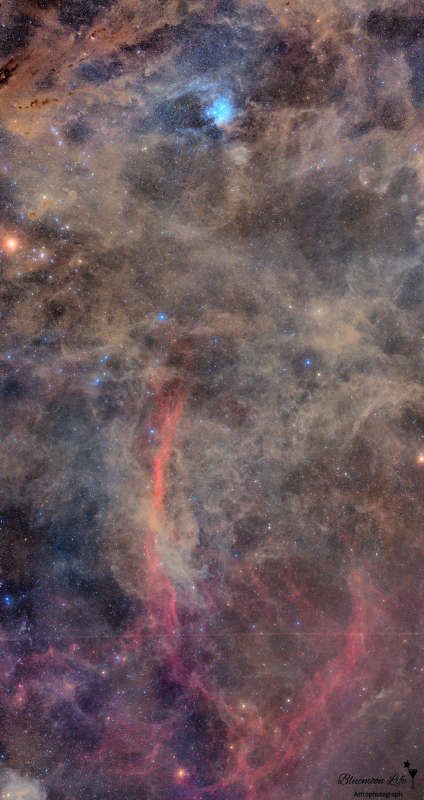Credit & Copyright: Hirofumi Okubo
Explanation:
If you stare at an interesting patch of sky long enough, will it look different?
In the case of
Pleiades and
Hyades star
clusters --
and surrounding regions -- the answer is: yes, pretty different.
Long duration camera exposures
reveal an intricate network of interwoven
interstellar dust and gas that was previously invisible not only to
the eye
but to lower exposure images.
In the
featured wide and deep mosaic, the dust stands out spectacularly, with the
familiar Pleaides star
cluster
visible as the blue patch near the top of the image.
Blue is the color of the
Pleiades'
most massive stars, whose distinctive light reflects from nearby fine dust.
On the upper left is the
Hyades
star cluster surrounding the bright, orange, foreground-star
Aldebaran.
Red glowing emission nebula
highlight the bottom of the image,
including the curving vertical red ribbon known as the
Eridanus
Loop.
The pervasive dust clouds appear typically in light brown and are dotted with
unrelated stars.
Almost Hyperspace:
Random APOD Generator
1999 2000 2001 2002 2003 2004 2005 2006 2007 2008 2009 2010 2011 2012 2013 2014 2015 2016 2017 2018 2019 2020 2021 2022 2023 2024 2025 |
Январь Февраль Март Апрель Май Июнь Июль Август Сентябрь Октябрь Ноябрь Декабрь |
NASA Web Site Statements, Warnings, and Disclaimers
NASA Official: Jay Norris. Specific rights apply.
A service of: LHEA at NASA / GSFC
& Michigan Tech. U.
|
Публикации с ключевыми словами:
pleiades - Eridanus - Плеяды - Эридан
Публикации со словами: pleiades - Eridanus - Плеяды - Эридан | |
См. также:
Все публикации на ту же тему >> | |
